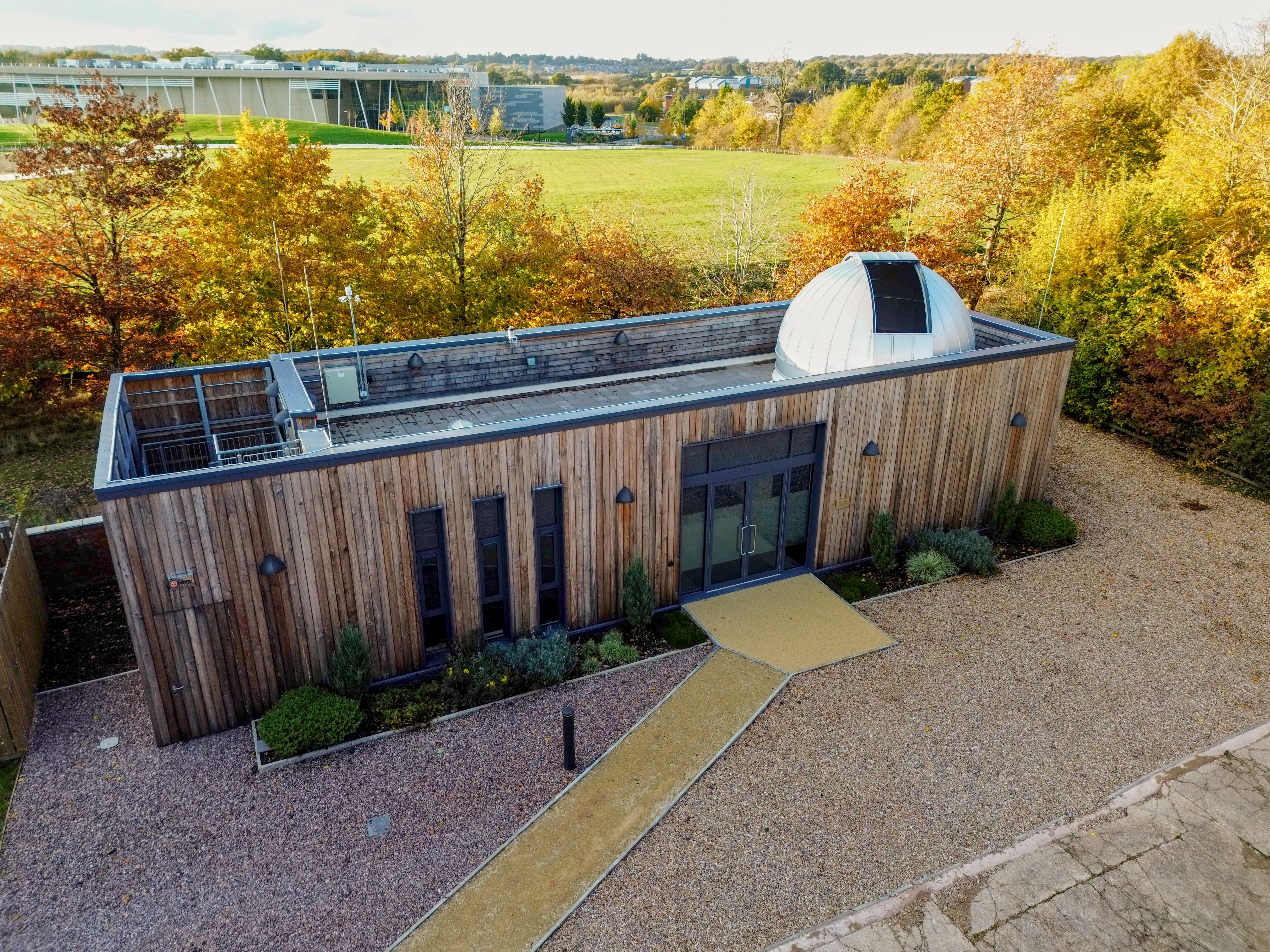The University of Warwick has opened its doors to its brand-new Marsh Observatory – which will train astronomers of the future. The on-campus telescope facility was opened by Dame Jocelyn Bell Burnell, who discovered the first radio pulsars in 1967 and one of a handful of women to have been awarded prestigious Royal Astronomical Society gold medal.
The observatory features a large 40 cm telescope and a state-of-the-art digital imager which will allow students and researchers to observe Solar System objects, stars, exoplanet transits, and galaxies. The telescope is connected with a network of research telescopes operated by the University of Warwick, including telescopes at La Palma, Chile, and Australia. The telescope will provide students the opportunity to hone their skills – easing the transition from their education to leading research.

The facility will be used for teaching as part of Warwick’s Physics with Astrophysics degree programme and for student research projects.
The Marsh Observatory will also be used to host public engagement events for schools and clubs, inspiring the next generation of young scientists. The facility features a roof-top terrace that can be used to set up small telescopes that can be used by school groups and astronomical societies. There is also space for the University of Warwick’s mobile planetarium.
The Marsh Observatory is part of the University of Warwick’s wider work to make physics and astronomy accessible to all. Academics and researchers head to schools in the local area to teach students about the night sky – with the mobile planetarium and an interactive table displaying the life-cycles of stars.
The Marsh Observatory is named in memory of Professor Tom Marsh, who founded astronomy and astrophysics research at Warwick in 2003, and who sadly passed away in 2022. During his 40-year career, Tom authored some 800 scientific papers on all manner of astronomical objects: binary stars, white dwarfs, variable stars, supernovae, and applying his techniques to find extra-solar planets and explore the Kuiper Belt. He won the Royal Astronomical Society’s Herschel Medal in 2018, awarded for investigations of outstanding merit in observational astrophysics.
Physics undergraduate Baidandri Saha said: “Spending my summer working at The Marsh Observatory was both exciting and enlightening. The hands-on experience with research-grade instruments sparked my passion for Observational Astronomy and solidified my future aspirations for research.”
Professor Danny Steeghs, Department of Physics, University of Warwick, said: “Although we operate state-of-the-art research facilities at remote professional observatories, an on-campus facility is a critical link. It gives our current students a key hands-on experience that sets them up for using more advanced facilities later, but can also excite the general public, appeal to prospective students and provide a platform for increasing interest in STEM subjects.”
Notes to Editors
Media contact
University of Warwick press office contact:
Annie Slinn 07876876934
Communications Officer | Press & Media Relations | University of Warwick Email: [email protected]
High-res images available here: https://we.tl/t-OrLCFCaB3v

Dr Daniel Bayliss (Director Marsh Observatory), Professor Mark Newton (Head of Physics), Davina Nwachukwu (Observatory URSS Scholar), Professor Dame Jocelyn Bell Burnell, Professor Stuart Croft, Mohammed Sultan, Baidandri Saha, (both UG Student in Physics), Paul Chote (research focus Assistant Professor Astronomy and Astrophysics group), Dr James McCormac (Assistant Professor: Astronomy and Astrophysics Group, research focussed), Ioannis Apergis (PhD Student: Department of Physics)
Image credit: The University of Warwick, Paul Archer
1 December 2023
